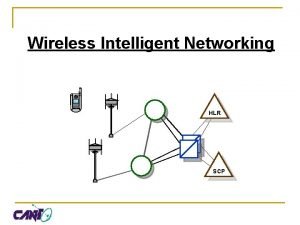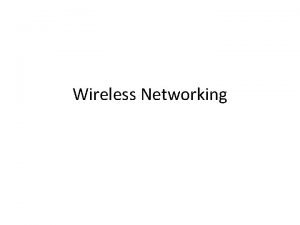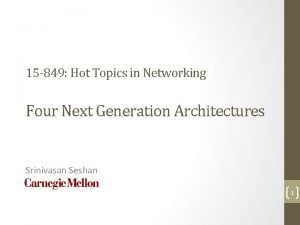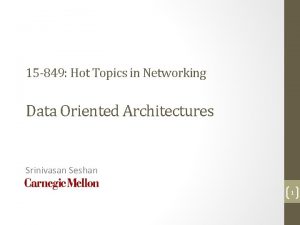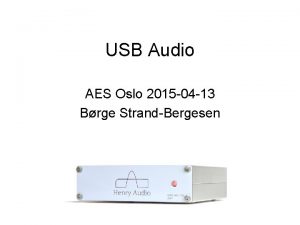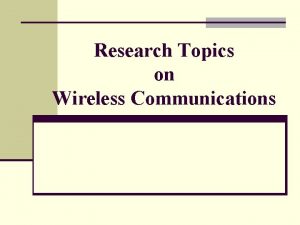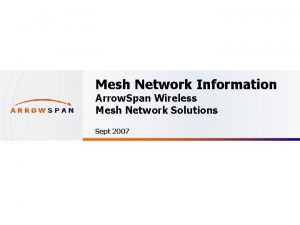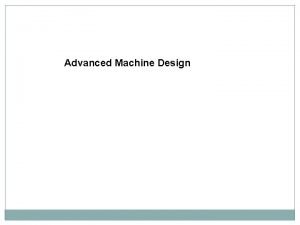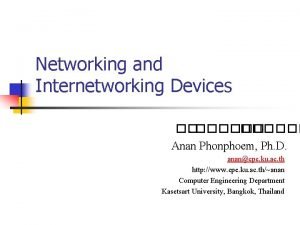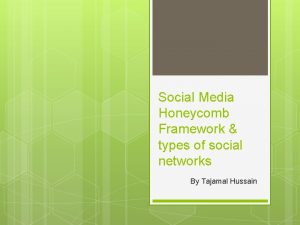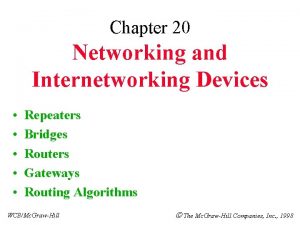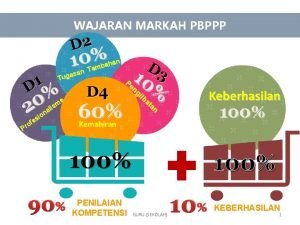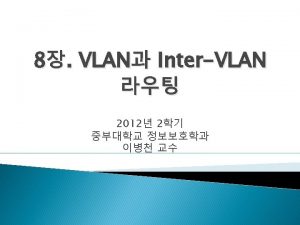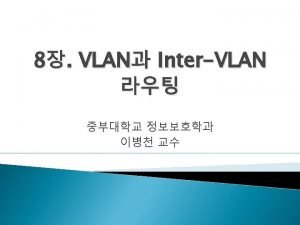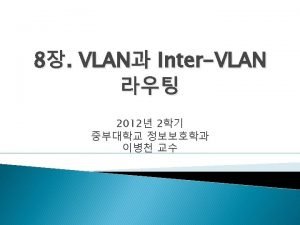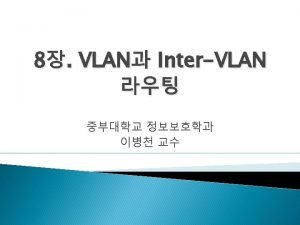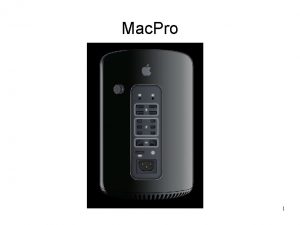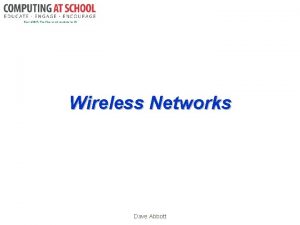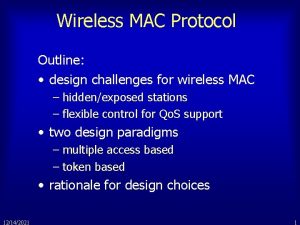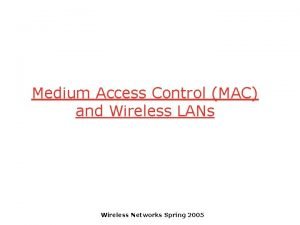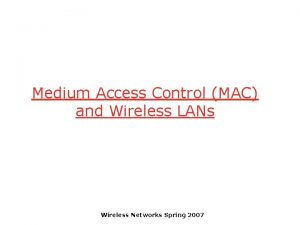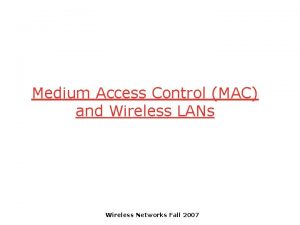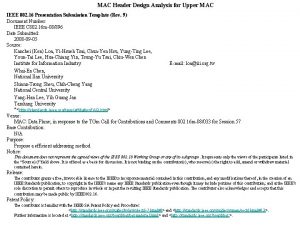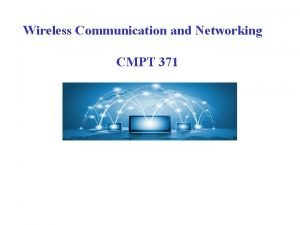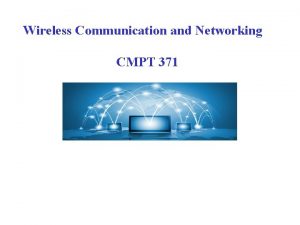Special Topics in Wireless Networking MAC design and

























- Slides: 25

Special Topics in Wireless Networking: MAC design and cross-layer issues D. Raychaudhuri & N. Mandayam 2/18/04

Today’s Lecture • Wireless MAC – Understanding the relationship between PHY and MAC – Some design examples from 802. 11, Bluetooth, Hiperlan, UWB, … – A cross-layer design project (MAC flow scheduling in 802. 11)

Important PHY Parameters • Wireless MAC’s need to be designed to deal with the following PHY parameters – Propagation delay (span of 1 m, 10 m or 1 Km? ) – Bit-rate (1 Mbps vs. 100? ) – Modem acquisition & training delay – Radio coverage (hidden/exposed nodes) – Carrier sensing (yes/no), and its threshold – Spreading codes (yes/no), and capture – Link reliability

Higher Layer Considerations • MAC also needs to consider higher layer requirements such as – Centralized AP vs. ad-hoc modes – Single vs. multi-hop usage – Flows and connectionless packets – Latency constraints – Qo. S needs, if any – Packet formats and fragmentation – Level of reliability required at layer 3

MAC Design Options • Several design options for wireless MAC – Slotted channel vs. asynchronous – Pure contention (ALOHA) – Carrier sensing (CS) – Collision detection (CD) – Collision avoidance (CA) – Locally synchronous scheduling – Time division multiple access (TDMA) – Code division multiple access (CDMA) – Polling, Reservations – RLC (reliable retransmission protocols)

Impact of Prop Del & Bit Rate • Effect of increasing propagation delay or bitrate – R=100 m ~ 1 ms, 1 Km ~ 10 ms, 10 Km ~ 100 ms – Pkt size = 50 B -> tx time @ 10 Mbps = 40 ms, @100 Mbps = 4 ms – Pkt size = 1000 B -> tx time @ 10 Mbps = 800 ms, @100 Mbps = 80 ms span r a = (span/c)/(pkt size/R)

Impact of Prop Del & Bit Rate • 802. 11 uses CS/CA which works only for a <<1 (WPAN and WLAN) • Think about outdoor mesh 802. 11 with ~1 -10 Km average spacing between nodes and R~10 -100 Mbps • 802. 16 with similar parameters • Alternative TDMA based access protocols proposed for this scenario… slides showing CSMA/CA, Bluetooth & DTDMA

Impact of Modem Synch • Critical parameter for control packet overhead • Typical control pkt ~16 B payload • Sync overhead ~16 B can be tolerated, lesser is better… • 802. 11 params: sync hdr 24, RTS 20 = 352 ms @1 Mbps • WATM params: sync hdr 16, control 8, 8 ms @25 Mbps

TDMA/TDD MAC Protocol • Important wireless MAC category with variations used in Ø Hiperlan/WATM Ø Bluetooth Ø 802. 15. 3 and possibly 802. 16 Ø Detail of implementation varies Modem preamble TDM Downlink TDMA Frame Burst from Access Point -> Mobiles D-TDMA Uplink S-ALOHA control Burst from User A To Access Point User B User C

TDMA/TDD MAC • MAC protocol used in some broadband wireless scenarios (Hiperlan, 802. 16, WATM) supports flow Qo. S, etc. Modem preamble TDM Downlink TDMA Frame (~1 -2 ms) S-ALOHA control Burst from Base Station -> Mobiles AP Identifier TDMA Frame No. # Dn Control Slots # Up contention slots # Dn data cells Superframe size Reserved (8 Bytes) CRC-16 Frame Header D-TDMA Uplink Cell Sequence No. VPI GFC VPI VCI PTI CLP VCI HEC Standard ATM Payload (48 bytes) CRC-16 WATM Cell Burst from User A To Base Station User B # Data Cells # Control Pkts Mobile ID Reserved CRC-16 Uplink Subframe Header User C Type RSN Mobile ID # Slots Req/Start. . . Slot RT Resvd/# Slots Alloc CRC-16 BW Req/Alloc Pkt

D-TDMA RLC Protocol • RLC with group ACK for error recovery on a per-flow basis, both UBR and CBR selective retx initial data tx VC x AAL 5 packet for UBR/ABR MAC Interface 5 4 3 2 1 3 Receive DLC buffers MAC Interface 5 4 3 2 1 Transmit DLC buffers ACK (1, 2, 4, 5) 5 4 3 2 1 VC x ACK(3) • Involves buffering & re-sequencing for each service flow. . .

UWB: MAC protocol example • MAC optimized for bulk data transfer ØUtilizes multi-code CDMA capability in UWB ØSimplifies synch requirements for UWB PHY Downlink Beacon (for synch) Code 1 D (high PG) Code 2 D Timing marker Control packet (with allocations) Donwlink access control channel (multicast) Access Zone coverage Code 1 U Uplink access control channel (asynch random access) TDM downlink Code 3 D Code 2 U (low PG) PHY bit rate may be Adapted dynamically Scheduled (TDMA) uplink Allocations relative to timing markers Service Zone coverage

UWB: Ad-hoc MAC example • Potential MAC/link layer based on DS/CDMA UWB PHY: Ø Continuous beacon for synchronization Ø Low bit-rate, high-spreading gain common channel Ø Handshake protocol for setting achievable link bit-rate Beacon S 1 Beacon S 2 S 1 S 2 Link establishment signal (S 1, S 2, C 12) S 1 Common code Control Code A Rate adaptation, ARQ Link ACK (S 1, S 2, C 12) S 2 Code B

Impact of Radio Coverage • Radio propagation effects result in “hidden node” and “exposed node” problems • Arises in both centralized and ad-hoc network architectures • Hidden node solutions: – Broadcast of control information from AP – RTS/CTS procedure in 802. 11 – Separate node discovery phase

Impact of Radio Coverage • Exposed node solutions (…more difficult problem) – MACA-P (Arup Acharya, 2002) – D-LSMA (Zhibin Wu, work in progress)

Impact of Channel Quality • Variations in link SNR have an impact on MAC in terms of: – Adaptive link bit-rate may vary in certain systems (e. g. 802. 11). Results in major changes in pkt tx time, control overhead, etc. – Packets may experience high error rates, resulting in repeated retransmission, and hence poor throughput – Combination of the above may occur as well

Impact of Channel Quality • Typical solutions are: – Small packets or adaptive packet fragmentation – Built-in radio link control (RLC) protocol, e. g. ACK in 802. 11 or group ACK in DTDMA – Increased backoff for retransmitting users – MAC scheduling based on link quality

Impact of Channel Quality • Scheduling in 802. 11 R=5. 5 Mbps R=11 Mbps User 1 SNR=20 d. B R=1 Mbps User 3 SNR=15 d. B User 2 SNR=8 d. B

Impact of Channel Quality • Scheduling in 802. 11 prioritizing by channel quality, flow rate needs, etc. 2 2 Retx 1 1 1 2 Retx 2 Channel time (without scheduling) 1 3 Channel time (with scheduling) …. 2 @5. 5 Mbps 2

Network Layer Considerations: MAC for multi-hop service • MAC optimizations needed for different types of service, for example ad-hoc multihop vs. centralized single hop • An example is the DCMA protocol for “cut -through” ad-hoc routing + MAC • See Acharya’s paper

Network Layer Considerations: Supporting flow Qo. S • Wireless MAC’s studied have various levels of Qo. S support • Explicit support in D-TDMA schemes (connection oriented) • Hybrid contention/reservation method in 802. 11 spec (not supported by most vendors) – PCF (point co-ordination function) See slide on PCF from 802. 11 tutorial

MAC Project • Design and Prototyping project • Test harness for adding limited application level MAC features to 802. 11 provided (with RTS/CTS and ACK’s turned off) • Linux PC AP and client platforms with modified drivers, etc. provided by Z. Wu • Design document (full description, flow charts, pseudo-code, etc. ) and prototype demo as deliverable by April 15.

MAC Project • 802. 11 protocol extensions AP test harness for application level MAC development Client test harness for application level MAC development

MAC Project • Design MAC reservation and scheduling extensions to provide flow Qo. S for 1, 2. . n users. Test with 3 UDP sources generating ~0. 5, 1, 2 Mbps. Measure connection setup delay, flow rate, overhead, net throughput and packet loss rates. OR

MAC Project • Design MAC reservation, error control and scheduling extensions to provide fast downloading of large files to 1, 2. . n users with simultaneous requests. Prototype with 3 users each downloading a 10 MB file using TCP. The goal is to minimize total elapsed time for delivering all 3 files to completion.
 Sdn vs traditional networking
Sdn vs traditional networking Telecommunications the internet and wireless technology
Telecommunications the internet and wireless technology Any time interrogation call flow
Any time interrogation call flow Wireless networking definition
Wireless networking definition Hot topics in networking
Hot topics in networking Hot topics in networking
Hot topics in networking Mac bethad mac findláich
Mac bethad mac findláich Mac mac o kok dac
Mac mac o kok dac Wireless communication research topics
Wireless communication research topics Special investigative topics 3232
Special investigative topics 3232 Dena schlosser
Dena schlosser Software engineering course syllabus
Software engineering course syllabus Arrow mesh wifi
Arrow mesh wifi Design seminar topics
Design seminar topics Advanced machine engineering
Advanced machine engineering Advantages and disadvantages of wired and wireless networks
Advantages and disadvantages of wired and wireless networks Networking and internetworking devices
Networking and internetworking devices Business data communications and networking
Business data communications and networking Business data communication and networking
Business data communication and networking Honeycomb framework
Honeycomb framework Persuasion and networking
Persuasion and networking Disadvantages of networking
Disadvantages of networking Ictii
Ictii Computer network assignment
Computer network assignment Networking and internetworking devices
Networking and internetworking devices Wajaran markah pbppp
Wajaran markah pbppp


